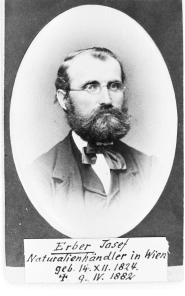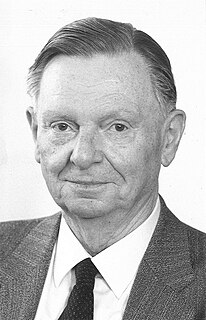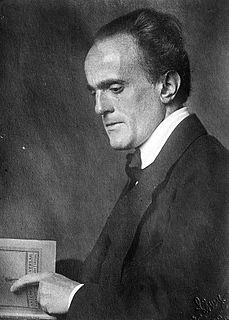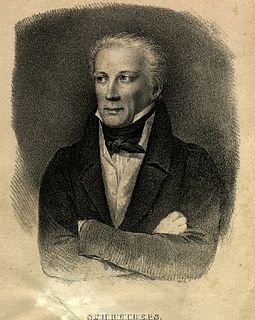 W
WCarl August Graf Attems-Petzenstein was an Austrian myriapodologist and invertebrate zoologist. He published 138 scientific papers, most of them dealing with his specialist field, the myriapods. He described about 1800 new species and subspecies from all over the world.
 W
WStephan von Breuning was an Austrian entomologist who specialised in the study of beetles (Coleopterology), particularly within the longhorn family (Cerambycidae).
 W
WCarl-Bernhard Brühl was an Austrian physician and anatomist known for his work in the field of comparative osteology.
 W
WReinhard Dallinger is an Austrian zoologist and professor of zoology and ecotoxicology at the University of Innsbruck. He works in the field of biochemistry and physiology of trace element metabolism of invertebrate animals and in the field of environmental toxicology of metals in terrestric and aquatic habitats.
 W
WKarl (Carl) Moriz (Moritz) Diesing was an Austrian naturalist and zoologist, specializing in the study of helminthology.
 W
WIrenäus Eibl-Eibesfeldt was an Austrian ethnologist in the field of human ethology. In authoring the book which bears that title, he applied ethology to humans by studying them in a perspective more common to volumes studying animal behavior.
 W
WJosef Erber was a natural history dealer in Vienna. He made expeditions to the Greek Islands.
 W
WLeopold Joseph Franz Johann Fitzinger was an Austrian zoologist.
 W
WLudwig Graff de Pancsova, more known as Ludwig von Graff, was an Austrian zoologist born in Pancsova.
 W
WBerthold Hatschek was an Austrian zoologist remembered for embryological and morphological studies of invertebrates.
 W
WHelmut Otto Hofer was an Austrian zoologist and anatomist.
 W
WPaul Kammerer was an Austrian biologist who studied and advocated Lamarckism, the theory that organisms may pass to their offspring characteristics acquired in their lifetime.
 W
WFriedrich Carl Knauer was an Austrian zoologist.
 W
WRudolf Kner was an Austrian zoologist and ichthyologist.
 W
WKonrad Zacharias Lorenz was an Austrian zoologist, ethologist, and ornithologist. He shared the 1973 Nobel Prize in Physiology or Medicine with Nikolaas Tinbergen and Karl von Frisch. He is often regarded as one of the founders of modern ethology, the study of animal behavior. He developed an approach that began with an earlier generation, including his teacher Oskar Heinroth.
 W
WJohann Christian Mikan was an Austrian-Czech botanist, zoologist and entomologist. He was the son of Joseph Gottfried Mikan.
 W
WPaul Pfurtscheller was an Austrian zoologist and natural history artist who produced a series of 'Zoologischen Wandtafeln' from 1902 onwards. Such charts were initially used only in German-speaking countries, but their use soon became common elsewhere.
 W
WViktor Pietschmann was an Austrian ichthyologist at the Vienna Museum of Natural History. He was the curator of the fish collection from 1919 to 1946 and made collecting trips to the Barents Sea, Greenland, Mesopotamia, Armenia, Hawaii, Romania, and Poland. Pietschmann described many new fish, including several species of shark, and had more than 50 publications over his career. He served in the Austrian army in World War I, during which he was stationed in the Ottoman Empire. While there, Pietschmann witnessed the Armenian Genocide and took many photographs of the deportees. He joined the National Socialist German Workers' Party (NSDAP) in 1932 and remained a member until the end of World War II.
 W
WJohann Baptist Emanuel Pohl was an Austrian botanist, entomologist, geologist, mineralogist, and physician.
 W
WStanislaus Josef Mathias von Prowazek, Edler von Lanow, born Stanislav Provázek, was a Czech zoologist and parasitologist, who along with pathologist Henrique da Rocha Lima (1879-1956) discovered the pathogen of epidemic typhus.
 W
WRupert Riedl was an Austrian zoologist.
 W
WCarl Franz Anton Ritter von Schreibers was an Austrian naturalist who was a native of Pressburg, Hungary, Habsburg Empire.
 W
WFranz Steindachner was an Austrian zoologist, ichthyologist, and herpetologist. He published over 200 papers on fishes and over 50 papers on reptiles and amphibians Steindachner described hundreds of new species of fish and dozens of new amphibians and reptiles. At least seven species of reptile have been named after him.
 W
WFranz Xaver Freiherr von Wulfen was an Austrian botanist, zoologist, mineralogist, alpinist, and Jesuit priest. He is credited with discovering the flowering plants Wulfenia carinthiaca, Saxifraga moschata, and Stellaria bulbosa. In 1845 the lead molybdate mineral wulfenite was named in his honor by Wilhelm Karl von Haidinger.
 W
WErich Johann Georg Zugmayer was an Austrian zoologist and ichthyologist